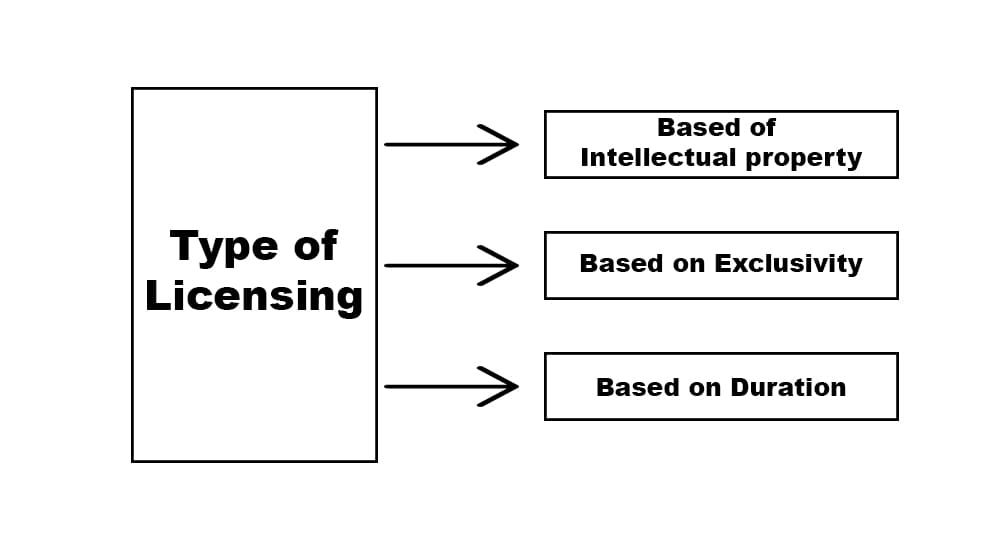Licensing is a business arrangement where a company permits another company to use its intellectual property for a certain time, mostly in return for a financial payment.
Intellectual property can be a production process, patent, copyright, etc.
Examples of a license can be KFC, McDonald’s, Coca-Cola, etc. These companies authorize local manufacturers or distributors to manufacture and sell their products.
A company that gives a license is the licensor, and the company that receives the permission is known as a licensee.
Licensing allows businesses to use an existing process and technology immediately that might take years to develop. In return, they have to share a profit with the licensor.
On the other hand, licensing helps licensors earn a profit without effort and increases brand recognition. For example, Calvin Klein earns about 90 percent of their 160 million USD a year in sales through licensing.
Need for Licensing
Licensing helps both the licensor and licensee.
Licensing helps grow business for licensors in the following ways:
- They can make immediate profits with little or no effort.
- They capture market share quickly.
- It increases their brand recognition.
- There is less risk.
The licensee can benefit in the following ways:
- Immediate access to technology and processes.
- Due to brand recognition, they receive immediate sales.
- There is less risk as the product is already well established.
Types of Licensing

The licensing can be of the following types:
- Based on IP
- Based on Exclusivity
- Based on Duration
Based on IP
- Patent Licensing: This is one of the most complex types of licensing. Here, the licensee gets a license to use a part of the process or the complete process for a certain duration in return for a royalty payment. For example, India gets patent licensing from Russia to build a Sukhoi fighter jet in India.
- Copyright Licensing: This type of licensing is used with content, audio, video, and artwork. Here, the licensee can use the copyrighted content in return for a royalty.
- Trademark Licensing: Here, a brand lets other businesses use their trademark, name, logos, etc. For example, many software companies use Microsoft-certified logos after getting their product certified by Microsoft.
Based on Exclusivity
- Exclusive: This is a special kind of patent. Here, only one licensee can use the licensor’s intellectual property in a specific geographic area. Usually, these licenses cost more than normal patent licensing.
- Non-Exclusive: This is the same as exclusive, but there is more than one licensee, and this licensing costs less than the exclusive licensing.
Based on Duration
- Perpetual: The licensee buys the license once and can use the intellectual property for life. This licensing is used in purchasing software where a licensee pays once and uses it for life. This licensing is more costly than usual as the licensee only pays a fee once.
- Term: In term licensing, the licensee pays to use the intellectual property for a specific duration. The licensee can regularly pay to continue using the intellectual property.
Drawbacks of Licensing
In licensing, the licensor has no control over the licensee’s processes. If the quality of the product is not good, it will affect the brand recognition of the licensor.
Once the license expires, the licensee can open the same business and become a competitor of the licensee. In this case, beating the licensee would be difficult, as they are well aware of all processes and have the experience and audience.
Summary
Licensing lets a licensor share their intellectual property with a licensee. It helps build relationships and brings benefits to all involved parties and consumers. Most businesses use licensing to enter a new market with the least investment, and licensors get access to the technology and earn profits.
